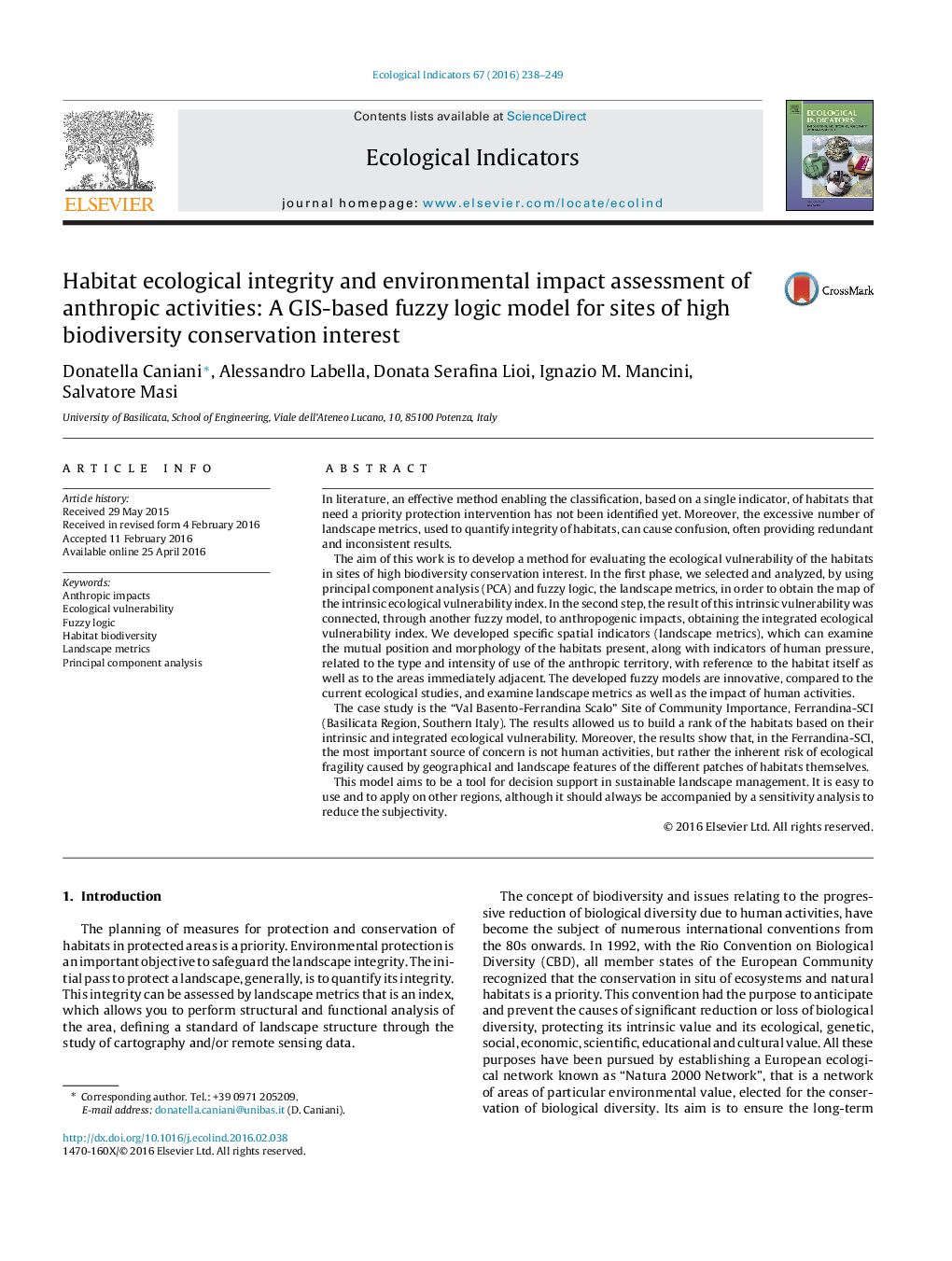| کد مقاله | کد نشریه | سال انتشار | مقاله انگلیسی | نسخه تمام متن |
|---|---|---|---|---|
| 4372871 | 1617135 | 2016 | 12 صفحه PDF | دانلود رایگان |
• Absence in literature of single indicators of habitat ecological vulnerability.
• The main objective is the evaluation of integrated ecological vulnerability (IEV) of habitats.
• PCA and fuzzy logic are used to obtain the map of intrinsic ecological vulnerability.
• IEV index is determined by integrating the impact of human activities.
• These models are tools for decision support in sustainable landscape management.
In literature, an effective method enabling the classification, based on a single indicator, of habitats that need a priority protection intervention has not been identified yet. Moreover, the excessive number of landscape metrics, used to quantify integrity of habitats, can cause confusion, often providing redundant and inconsistent results.The aim of this work is to develop a method for evaluating the ecological vulnerability of the habitats in sites of high biodiversity conservation interest. In the first phase, we selected and analyzed, by using principal component analysis (PCA) and fuzzy logic, the landscape metrics, in order to obtain the map of the intrinsic ecological vulnerability index. In the second step, the result of this intrinsic vulnerability was connected, through another fuzzy model, to anthropogenic impacts, obtaining the integrated ecological vulnerability index. We developed specific spatial indicators (landscape metrics), which can examine the mutual position and morphology of the habitats present, along with indicators of human pressure, related to the type and intensity of use of the anthropic territory, with reference to the habitat itself as well as to the areas immediately adjacent. The developed fuzzy models are innovative, compared to the current ecological studies, and examine landscape metrics as well as the impact of human activities.The case study is the “Val Basento-Ferrandina Scalo” Site of Community Importance, Ferrandina-SCI (Basilicata Region, Southern Italy). The results allowed us to build a rank of the habitats based on their intrinsic and integrated ecological vulnerability. Moreover, the results show that, in the Ferrandina-SCI, the most important source of concern is not human activities, but rather the inherent risk of ecological fragility caused by geographical and landscape features of the different patches of habitats themselves.This model aims to be a tool for decision support in sustainable landscape management. It is easy to use and to apply on other regions, although it should always be accompanied by a sensitivity analysis to reduce the subjectivity.
Journal: Ecological Indicators - Volume 67, August 2016, Pages 238–249
